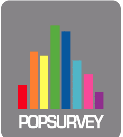Connected devices have become a way of life for many, but shoppers are digitally engaged to varying degrees depending on the products they buy. While e-commerce activity for some consumer packaged goods (CPG) products — especially perishable categories where freshness counts — may not be as transformative as other non-CPG industries — such as books, music and travel — online grocery purchasing power is growing. New findings from a Nielsen online survey of respondents from 56 countries around the world provide insight into the influence digital devices have on grocery-shopping behavior.
More than one-quarter (26%) of global respondents said they planned to purchase food and beverage products via an online connected device in the next three to six months — a jump from 18 percent reported in 2010. Skin care and cosmetics also increased from 22 percent to 25 percent in the latest survey.
One in five global respondents said they planned to purchase electronic books and digital newspaper and magazine subscriptions, a new category added to the Nielsen Global Survey in 2012. The online purchase intent of hard copy books and physical subscriptions declined from 44 percent in 2010, to 33 percent this year. Categories with growing global purchase intent include computer/game software (+18 percentage points), entertainment tickets (+10), computer/game hardware (+6), video/music production (+5), cars/motorcycle and accessories (+4) and apparel/accessories/shoes/jewelry (+1).

- Online shopping intentions for food and beverage categories increased 44 percent in two years
- Six-in-ten global respondents used the Internet for grocery shopping research
- Nearly half (49%) of respondents purchased a product online
- Globally, 46 percent used social media to help make purchase decisions
- 37 percent purchased from online-only stores most frequently
http://blog.nielsen.com/nielsenwire/online_mobile/how-connectivity-influences-global-shopping/



 Hasil survei dari Buddy Media menunjukkan meningkatnya kesadaran pemilik brand di Asia untuk menggunakan media sosial sebagai toolpemasaran produk. Kanal media sosial Facebook dan Twitter menjadi pilihan utama yang digunakan oleh para pemasar/marketer.
Hasil survei dari Buddy Media menunjukkan meningkatnya kesadaran pemilik brand di Asia untuk menggunakan media sosial sebagai toolpemasaran produk. Kanal media sosial Facebook dan Twitter menjadi pilihan utama yang digunakan oleh para pemasar/marketer. 





